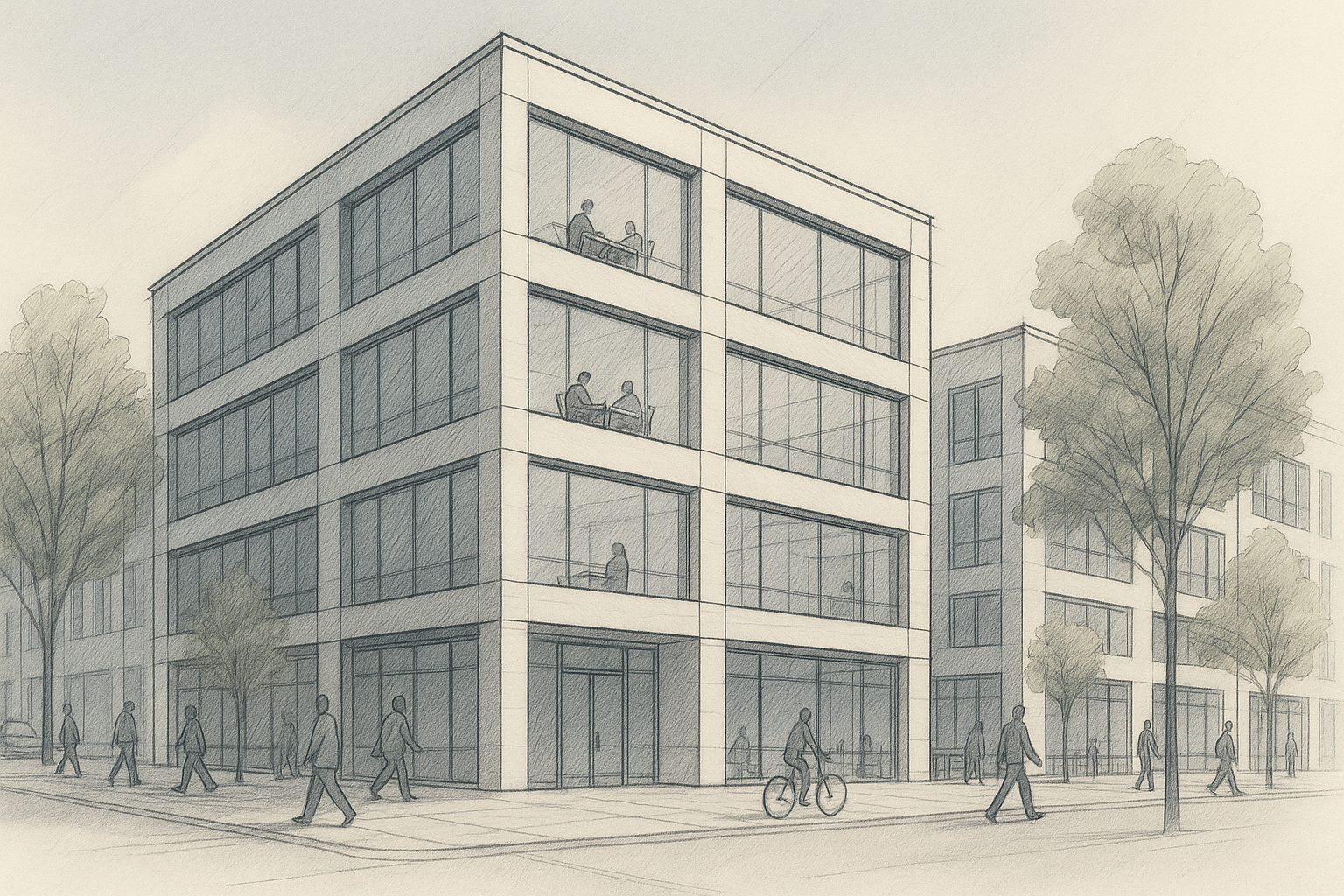Delayed financing allows a buyer to purchase a home with cash and then quickly refinance to recoup their investment. Garrick Werdmuller, President/CEO, Fresh Home Loan Inc Delayed financing ...
Atlanta's Office Comeback: Workspace Design Adapts to Lure Employees Back




As companies across Atlanta rethink how to bring employees back into the office, many are turning to thoughtful design to make the workplace a destination, not an obligation. The city’s commercial real estate landscape is shifting as developers and employers invest in spaces that foster collaboration and comfort.
“If we’re going to ask you to come back to work five days a week and have you be upset about that, then we’re going to make this the best place and the most collaborative space that we can possibly have,” says Jesse Whalen, Vice President of The Office Group at Bull Realty.
The Return-to-Office Movement Strengthens
After years of remote and hybrid work dominating corporate culture, Atlanta is experiencing a notable shift. Companies increasingly recognize that virtual collaboration has limitations for building organizational culture and fostering innovation.
“What I’ve been seeing, starting back in 2024, is companies realizing they don’t have the culture they had before when working from home,” Whalen observes. This realization has prompted many businesses to reconsider their workplace strategies, emphasizing in-person collaboration.
The data supports this trend. According to Avison Young, Atlanta’s office availability has reached its lowest point since 2023, with total availability at 30.8%, nearly a 2% decrease quarter-over-quarter. Meanwhile, leasing activity remains strong, with 2.4 million square feet captured during Q1 2025, reflecting market resilience despite a slight 7% dip from the previous quarter.
Redesigning Office Spaces for Contemporary Needs
As companies recall employees, they’re not simply reverting to pre-pandemic layouts. Instead, they’re fundamentally rethinking office functionality and purpose.
“Many of my conversations with CEO’s and heads of companies are saying that there is some apprehension about requiring employees to be in the office five days a week. If they are going to make that transition like many other companies have, then they want their space and building to be the absolute best and a most attractive building/space that they can possibly have. Subsequently, we are seeing a huge trend to leasing trophy office tower space.” Whalen explains. This expansion focuses on creating environments that make commuting worthwhile.
According to Cresa data, there’s been a significant shift away from purely open office styles toward a more balanced approach integrating private offices, huddle rooms, and collaborative spaces. This hybrid design provides both privacy for focused work and open areas for spontaneous interaction.
Whalen has observed an interesting reversal: “Another trend I’m seeing is more interior offices and open space on the exterior perimeter.” This approach, contrary to traditional layouts where corner offices dominated window real estate, democratizes access to natural light and views, potentially improving morale for all employees.
Expanded Space, Enhanced Amenities
The pandemic has prompted a reassessment of space allocation. “Before the pandemic, many companies had about 100 to 200 square feet per employee. Now it’s anywhere from 345 to 500 square feet per person,” notes Whalen. This expanded footprint allows for more comfortable distancing and diverse work settings.
Building owners are investing substantially to create environments that workers want to occupy. “Building owners are revamping their properties to make them more appealing for people to return,” Whalen says.
“I’ve toured several buildings over the last month where one has built an oasis-like greenery in the center with waterfalls,” Whalen shares, noting how biophilic design elements are becoming common in Atlanta’s premium office spaces.
Financial Backing for Office Transformations
A key enabler of these ambitious office redesigns is the availability of tenant improvement allowances. “Building owners are providing substantial tenant improvement allowances in the Atlanta market, averaging about five to $7 a square foot per year of the lease term,” Whalen explains.
This financial support gives tenants the capital needed to create distinctive workplaces reflecting their brand and culture. The investment appears beneficial for Atlanta overall. According to CBRE’s 2025 U.S. Investor Intentions Survey, Atlanta maintained its position at #4 among the most attractive markets for investment nationwide.
Privacy Makes a Comeback
One notable trend is the resurgence of private offices. “Private offices are making a comeback… but they’re not just putting you in a white box,” Whalen observes.
This return to privacy doesn’t abandon open-plan concepts but represents a more thoughtful integration of different work settings. Today’s private offices often feature glass walls to maintain visual connection while providing acoustic separation—a balance many workers find ideal for concentration without isolation.
Looking Ahead: Strategic Workplace Advantage
As the return-to-office movement accelerates, companies investing in thoughtfully designed workplaces may gain advantages in talent attraction and retention. “We’re receiving many more inquiries because companies are seeing the trend of people returning to the office five days a week,” Whalen notes.
Companies slow to enhance their office environments may find themselves disadvantaged as employees increasingly expect workplaces offering more than basic accommodations. The most successful office spaces will provide experiences and amenities unavailable at home.
Atlanta’s office market is well-positioned to lead this evolution, with strong investment interest, decreasing vacancy rates, and building owners willing to fund significant improvements.
For companies navigating this landscape, the office has evolved beyond a mere workplace, it’s now a strategic asset for building culture, fostering collaboration, and engaging employees in ways remote work cannot match. Those who adapt effectively will likely realize significant organizational benefits in the coming years.
Similar Articles
Explore similar articles from Our Team of Experts.


ELLENSBURG, Wash., June 05, 2024 (GLOBE NEWSWIRE) — CPP (Community Preservation Partners), a mission-driven affordable housing preservation developer, today announced the acquisition ...


SAN DIEGO, CA, MEXICO, August 11, 2024 /EINPresswire.com/ — Glohab, Inc. is excited to announce the launch of its revolutionary INCABLOCK™ Construction System. This groundbreaking sy...


The innovative mobile application features AI assistant “Mel,” transaction management, and exclusive listings to compete with industry giants Distinct Concierge Real Estate has o...


Jeremy Jones Senior Business Executive Launches PatchMaster Franchise in Rochester, New York PatchMaster is the ideal platform to fulfill my entrepreneurial aspirations. It aligns perfectly ...



